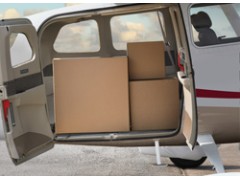The commercial pilot certificate is wher you will demonstrate to the FAA that you have a safe, professional command of your aircraft and are prepared for in flight emergencies.
The commercial certificate will allow you to fly (in limited scenarios) passengers and/or cargo for hire. This is the first step toward becoming a professional pilot. Commercial pilot training will build on skills you already have from your primary flight training and instrument training.
You will demonstrate a greater precision in flying, flight planning and understanding federal regulations, as well as a greater knowledge of weather and aircraft systems.
Be at least 18 years of age.
Be able to read, write, and converse fluently in English.
Hold a current FAA medical certificate.
Receive and log ground training from an authorized instructor or complete a home-study course, such as studying Commercial Pilot AA Knowledge Test (and the related Gleim FAA Test Prep software), the Pilot’s Handbook of Aeronautical Knowledge and the Airplane Flying Handbook. Subjects include:
FARs
NTSB Part 830
Aerodynamics
Aviation weather
Operation of aircraft
Weight and balance
Performance charts
Effects of exceeding limitations
VFR charts
Navigation facilities
Aeronautical Decision Making (ADM)
Aircraft systems
Maneuvers, procedures, and emergency operations in the airplane
Night and high-altitude operations
National airspace system
Pass the FAA commercial pilot knowledge test with a score of 70% or better.
Accumulate flight experience (FAR 61.129). You must log at least 250 hr. of flight time as a pilot that consists of at least:
100 hr. in powered aircraft, of which 50 hr. must be in airplanes
100 hr. as pilot in command flight time, which includes at least:
50 hr. in airplanes
50 hr. in cross-country flight of which at least 10 hr. must be in airplanes
20 hr. of training in the areas of operation listed in item 8. below, including at least:
10 hr. of instrument training of which at least 5 hr. must be in a single-engine airplane
10 hr. of training in an airplane that has a retractable landing gear, flaps, and controllable pitch propeller, or is turbine-powered
One cross-country flight of at least 2 hr. in a single-engine airplane in day-VFR conditions, consisting of a total straight-line distance of more than 100 NM from the original point of departure
One cross-country flight of at least 2 hr. in a single-engine airplane in night-VFR conditions, consisting of a straight-line distance of more than 100 NM from the original point of departure
3 hr. in a single-engine airplane in preparation for the practical test within the 60 days preceding the test
10 hr. of solo flight in a single-engine airplane training in the areas of operation required for a single-engine rating, which includes at least:
One cross-country flight of not less than 300 NM total distance, with landings at a minimum of three points, one of which is a straight-line distance of at least 250 NM from the original departure point
In Hawaii, the longest segment need have only a straight-line distance of at least 150 NM.
5 hr. in night-VFR conditions with 10 takeoffs and 10 landings (with each landing involving a flight in the traffic pattern) at an airport with an operating control tower
Use our Commercial Pilot Flight Maneuvers and Practical Test Prep book for your first commercial flight lesson to your practical test. We outline and illustrate each flight maneuver you will perform during your flight training and explain the common errors associated with each maneuver.
Hold an instrument rating or your commercial certificate will be endorsed with a prohibition against carrying passengers for hire on flights beyond 50 NM or at night.
Demonstrate flight proficiency (FAR 61.127). You must receive and log training, and obtain a logbook sign-off (endorsement) from your CFI on the following areas of operation:
Preflight preparation
Preflight procedures
Airport and seaplane base operations
Takeoffs, landings, and go-arounds
Performance maneuvers
Ground reference maneuvers
Navigation
Slow flight and stalls
Emergency operations
High-altitude operations
Postflight procedures
Successfully complete a practical test, which will be conducted as specified in Gleim’s Commercial Pilot Flight Maneuvers and Practical Test Prep.





